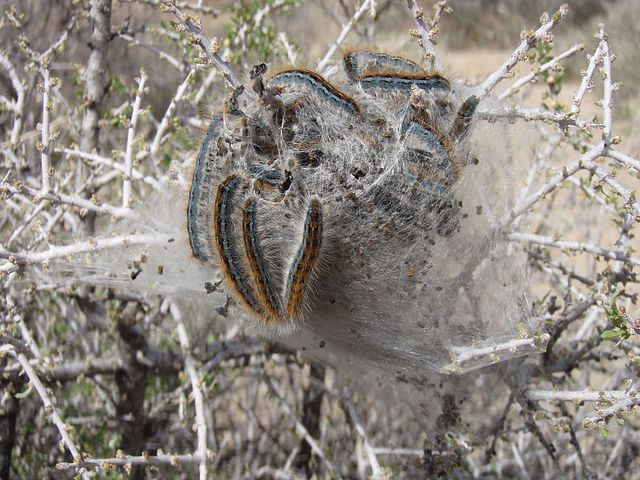Oh, those darn Tent Caterpillars. If you know what I’m talking about you may have a stronger term for them then “darn”, but around the Pacific Northwest, every few years we have an outbreak of Tent Caterpillars and they are everywhere. This year doesn’t look like it’s going to be that bad of a year but I remember just three or four years ago they seem to be everywhere. These type of caterpillars grow rapidly and typically complete their larval development in just 7 to 8 weeks. From there, they start the lifecycle all over again and deposit eggs on branches and in just three weeks, the small larva can be found within each egg mass.

Their existence in our backyards and forests seem to be feast or famine when it comes to the Pacific Northwest. During major outbreaks, caterpillars can become so abundant that they are capable of completely defoliation tens of thousands of acres of forest. Most areas report record outbreaks every 10 years or so. They rarely remain in outbreak numbers for more than 2 to 3 years due to parasites, disease, and the weather. In most of these cases, caterpillars will starve to death either because the trees are completely deformed related before the caterpillars are fully grown or because the quality of host leaves the declines to the point where they are no longer palatable.
But now is the time to be looking for their egg sacks. Blooms are just starting and these tender little shoots at the end of our fruit trees and alder trees are the perfect meal for these little newborns.

Search the tree limbs
If you have fruit trees in your backyard that are just now starting to bud, look at the branch towards the tip where the bud and new growth are located. If you see a flat, silvery, shiny blob stuck to the branch about a dime size or more, that is the Tent Caterpillar exact. You can simply scrape it off using your fingernail and the egg sac will no longer grow. Due to copyright laws, you can view the egg sack here AND here
If the egg sack already has little larvae in it, it still can be removed but must be thoroughly destroyed. If you notice tiny holes in the top of the silver casing, the caterpillars have already hatched.
If those caterpillars have already hatched and are crawling all over your buds, you can either squish them with your hands around the bud itself or if that’s not possible, remove the branch altogether. I tell you, the year that these things were out in full force, I had to lose a lot of my branches because I missed the egg sack on a lot of limbs.
Need help identifying these guys or maybe you just need help removing branches, limbs, or entire tree? Give us a call! We can offer over the phone estimates and more information on tree removal in King and Snohomish County.
